Skip to content 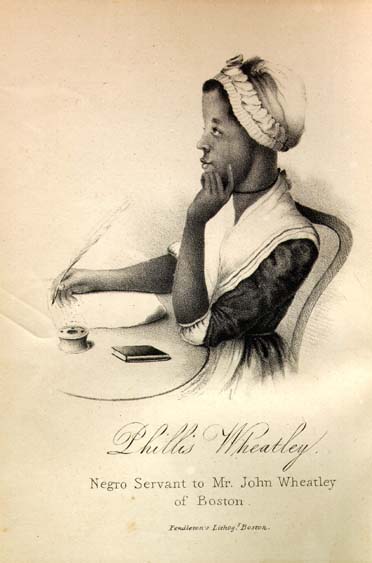
Phillis Wheatley was the first African American published poet. Born in West Africa in 1753, she was captured and sold to slave traders at age seven or eight years old. She traveled aboard the slave ship, The Phillis, in wretched conditions. Reaching Boston in 1761, John Wheatley, a tailor, bought her as a servant for his wife, Susanna. They named her Phillis after the slave ship. And gave her their last name as was customary. Now she was Phillis Wheatley.

Courtesy of Wikimedia Commons
The Wheatleys soon recognized Phillis’s exceptional intelligence. Their children, Mary and Nathaniel, taught her to read and write. She first became fluent in English and then learned to read Greek and Latin. She studied geography, history, astronomy, and literature.

Courtesy of Wikimedia Commons
Inspired by English poets, especially Alexander Pope, Phillis began to write poetry. The Newport Mercury printed her first published poem in 1767 when she was thirteen or fourteen. The poem described the sea voyage of Mr. Hussey and Mr. Coffin that ran into a horrific storm. Phillis had heard them tell their story.
Her most famous poem, “On Being Brought from Africa to America” was published in 1768. This poem reveals her feelings on slavery and racial injustice. But it was her poem “On the Death of the Rev. Mr. George Whitfield” that brought her into the national spotlight in 1770.
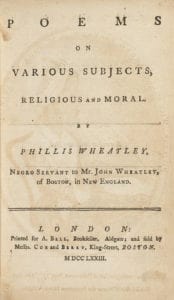
Courtesy of Wikimedia Commons
Phillis tried to have a book of her poetry printed in Boston. But the printers refused to believe that an African America had written the poems. She went to court to testify that she was the author. Eighteen men, including John Hancock, gave her an exam. Following the exam, the men agreed that she had written the poems. They signed a document that later appeared in her book.

Courtesy of flickr.com
Phillis and Nathaniel Wheatley sailed to England in 1773. With the financial help of a English countess, Phillis’s first and only book of poetry was published in England. Poems on Various Subjects Religious and Moral included “On Being Brought from Africa to America.”
Sometime after the publication of her book, Phillis became a free woman. She continued to write poetry and in 1778 married a free African America, John Peters. They struggled to meet expenses and after Peters was imprisoned for debts, Phillis worked as a scullery maid in a boarding house. She tried to publish a second book of poetry, but was unsuccessful.
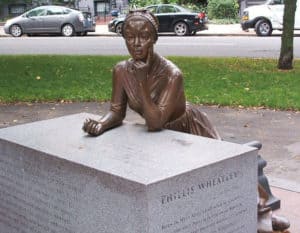
Courtesy of flickr.com
In 1784, Phillis wrote “Liberty and Peace,” her last poem. Sadly, on December 5, Phillis died in Boston at age 31. Many of her poems were lost. In 2003, Phillis was honored with a statue at the Boston Women’s Memorial.
Phillis Wheatley led the way for African America women to write and publish great literature.
Images Courtesy of Wiki Commons
If you like this post, then please consider sharing it and leaving a comment below. Thank you! Barbara Lowell, Children’s Author
Books For Kids:

A Voice of Her Own: The Story of Phillis Wheatley, Slave Poet
By Kathryn Lasky, Illustrated by Paul Lee
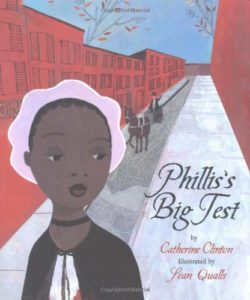
Phillis’s Big Test
By Catherine Clinton, Illustrated by Sean Qualls
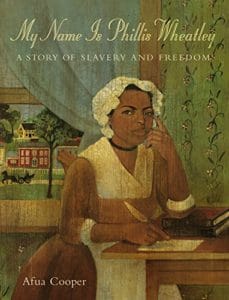
My Name Is Phillis Wheatley
By Afua Cooper

Seventeen-year-old Ben Franklin resented working for his brother James. He planned to run away from Boston, sail to New York, and live his own life. Ben had signed a contract with James promising to work as a printer’s assistant until he was twenty-one. He was an indentured servant. Running away seemed his only way out.
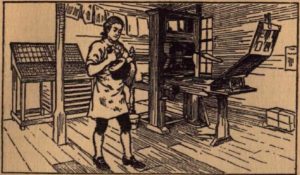
At first, Ben liked his job assisting James. Ben loved to read. He read everything printed in the shop including all the latest news and gossip in Boston.
One day, James found a letter from a widow named Mrs. Silence Dogood under the print shop door. James printed the letter and it became an overnight success. The letters continued. People in Boston loved reading Mrs. Dogood’s feisty opinions on everything. But there was no real Mrs. Silence Dogood. When James discovered it was Ben writing the letters, their relationship went downhill fast.
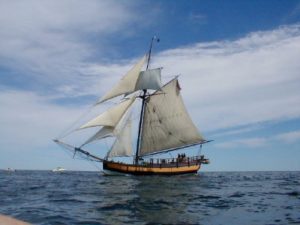
One evening, Ben snuck away and set sail on a ship for New York. He paid for his passage by selling some of his cherished books. Ben landed in New York almost penniless.
As a skilled printer’s assistant and a writer, he looked for a job in a print shop. But there was only one printer in the entire city. And that printer already had an apprentice. There was still good news. The printer’s son needed an apprentice at his print shop in Philadelphia.
Back on board another ship, this one in poor condition, Ben sailed for Philadelphia. Soon, the ship was hit by a massive storm. Its sails shredded. The crew lost control. A man fell overboard. Ben reached over the boat’s side and pulled the man back in. He saved the man’s life.
After thirty hours tossed around by high waves, the ship landed in New Jersey. Ben walked fifty miles to the Delaware River and then helped row a boat to Philadelphia. Ben reached the city, “…fatigued with traveling, rowing, and want of rest.”

In a few days, he found that the New York printer’s son hired an assistant. But another printer had recently opened a shop and he needed assistance. Ben began his new life in Philadelphia, the city he made his home, when he ran away.
The noblest question in the world is What Good may I do in it? – Benjamin Franklin
If you like this article, then please consider sharing it and leaving a comment below. Thank you! Barbara Lowell, Children’s Author












